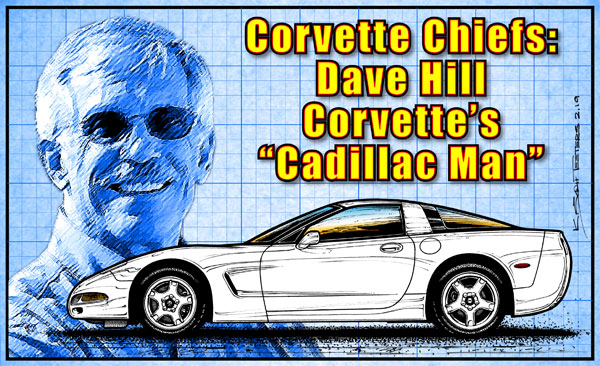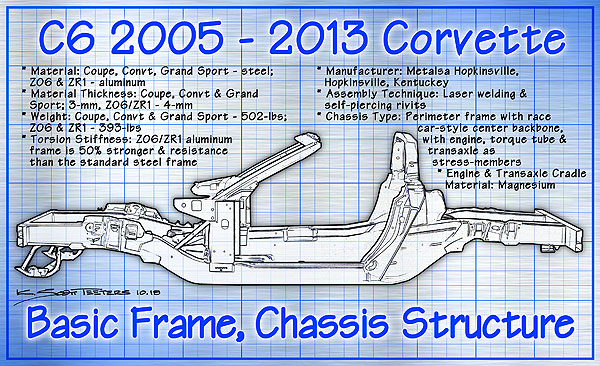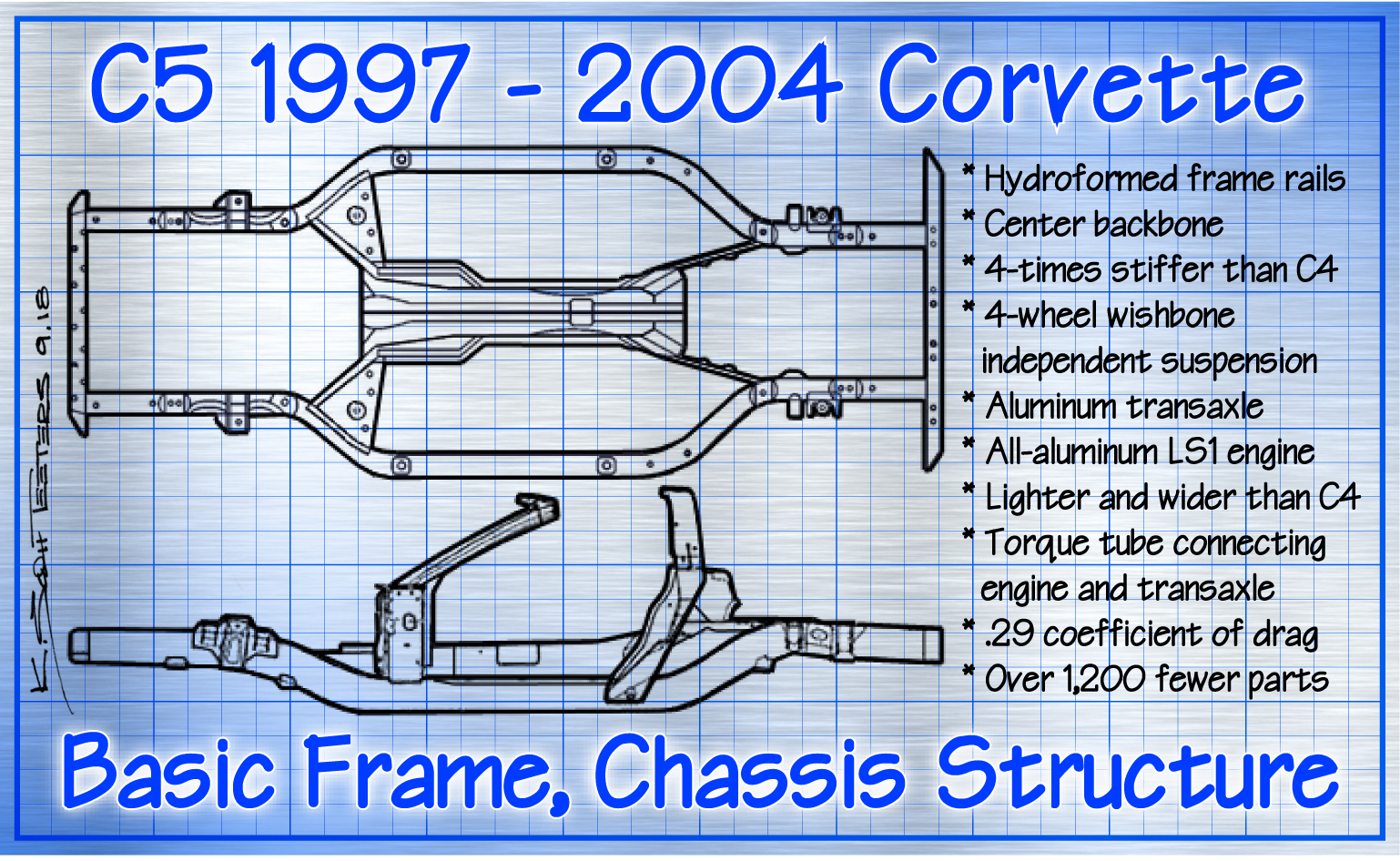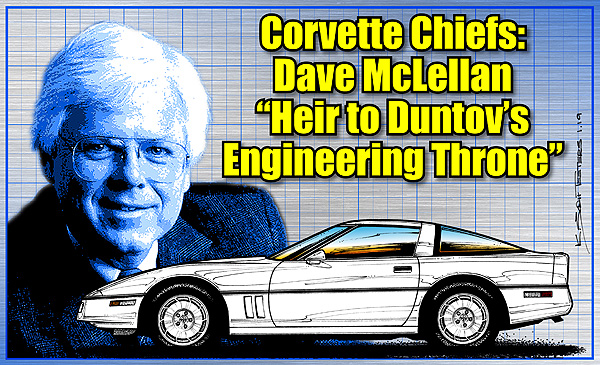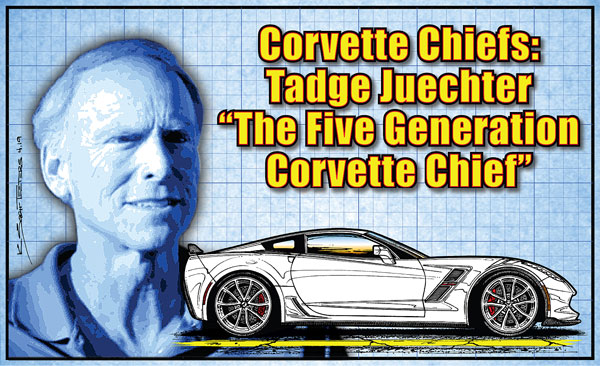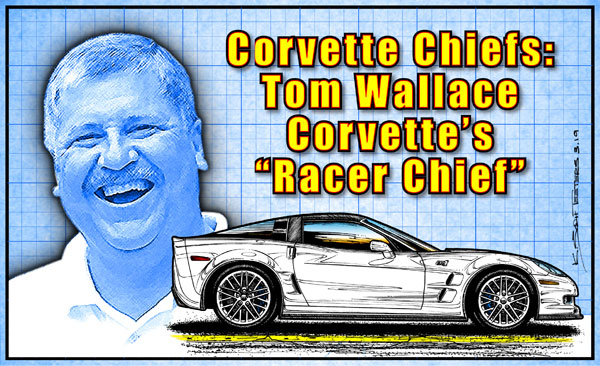Dave Hill once said, “My favorite Corvette is the next one.” Mr. Cadillac insisted on three key things; state of the art performance and technology; passionate design; and tremendous value. In an interview with c6registry.com, Hill said, “Being involved with Corvette brings out the best in all of us who have the privilege of working on it. It represents the best that GM has to offer; along with the best America has to offer. The Corvette is very personal. We’re not talking about transportation here; we’re talking about a product that changes someone’s lifestyle, and that causes us to be enthusiastic about our duty.” Read More
Search Results for: Dave Hill
Chassis History, Pt 5: Dave Hill Strikes Again! Delivers evolutionary, but superior C6
Corvette fans have been frustrated for years with Chevrolet’s evolutionary Corvettes. The “pie-in-the-sky” mid-engine Corvette has been around since the 1960s and anything less was evolutionary. The pending C8 aside, the C5 was the most revolutionary Corvette; because of the hydroformed steel perimeter frame, center backbone, all-aluminum LS1 fuel-injected engine, and transaxle. The C5 was the most solid Corvette ever offered and allowed engineers to vastly improve the basic suspension, the Z51, and the Z06. The racing C5-R won its class at Daytona in 2001 and 2003; won its class at Sebring in 2002, 2003, and 2004, and won its class at Le Mans in 2001, 2002, and 2004. This never would have happened without the superior basic C5 chassis. Dave Hill’s team got the C5’s chassis design so right that by 1999 they determined that a C6 needed to be started. Read More
Corvette Chassis History, Pt.4: The C5 Chassis That Dave Hill Built
Joe Spielman ran GM’s Midsize Car Division in 1992 and was responsible for forty-percent of the engineering and manufacturing of GM’s auto production. It was a bad time for GM and despite the Corvette’s iconic status; its future was in jeopardy. Spielman created the “Decision Makers” that included himself, Carlisle Davis, John Cafaro, and Dave McLellan. Three possible formats for the C5 Corvette were created. The first format was the “Momentum Architecture” that featured a stiff backbone, front-engine, rear transmission, and an evolutionary body style. The second format was the “Mid-Engine”, favored by McLellan and GM President Jack Smith. The 1990 CERV III wasn’t just a dream car, it was built with manufacturing in mind, but was going to be complex and expensive. The third format was “Stiffer and Lighter”. This would be the least expensive and was a stiffer, lighter version of the C4. Fortunately, the team went with the “Momentum Architecture”. Read More
10.19.95 – General Motors “knights” Dave Hill to be the new Corvette Vehicle Line Executive, aka, Chief Engineer – Video
10.19.95 – General Motors “knights” Dave Hill to be the new Corvette Vehicle Line Executive, aka, Chief Engineer – Video Read More
Corvette Chiefs, Pt. 2 of 5 – Dave McLellan
When Dave McLellan took over as Corvette’s new chief
engineer on January 1, 1975, it was whole new world. The prevailing trends went from performance cars to safer cars with reduced emission. Not even Duntov could have made a difference in the ‘70s. But as performance went down, Corvette sales went way up! The sales department was happy, but the Corvette was really getting old. Dave McLellan was an unknown to the Corvette community and many wondered what he would bring to the brand. It turned out; he brought a lot! Read More
Corvette Legends: The Great, Dave MacDonald, Part 2
Being hired by Shelby made the MacDonald’s life almost as fast as the cars he drove. In the 17 months between the beginning of ‘63 through to the ‘64 Indy race, MacDonald raced in 44 events. The ‘64 Indy crash was the first time the 500 had ever been stopped because of an accident. The media at the time, would regularly make big headlines over any auto racing mishap, and were all over the crash. While Indy officials quickly concluded that there was no driver error, the race was hotly debated for decades. Read More
Corvette Chiefs, Pt. 5 or 5: Tadge Juechter
All five Corvette chief engineers contributed mightily and in their own unique ways. But only Tadge Juechter has the distinction of having done hard engineering on five generations of Corvettes. When Juechter went to work in 1993 as chief engineer Dave Hill’s right-hand-man, there were two objectives; keep the then-current C4 fresh and interesting; and design and develop the most revolutionary Corvette to that date, the C5. After Hill’s retirement, Tom Wallace was Vehicle Line Engineer (VLE) and chief engineer for the Corvette. Wallace accessed that because of Juechter’s 15 years of experience, he was the right man for the chief engineer position. Read More
Corvette Chiefs, Pt. 4 of 5 – Tom Wallace, Racer C6 Chief Engineer
Dave Hill was the VLE of Performance Car that included Corvette, Cadillac XLR, Saturn Sky, Pontiac Solstice, Opel GT. One day during a group vehicle-program review meeting with Bob Lutz; Wallace heard Hill outlining the Z06 with 505-horsepower and a dry-sump oil system, he said to himself, “What the!” Wallace said to Lutz, “My goodness, this is unbelievable. Do you know what Dave is about to do?” Wallace said that some of the VLEs had no idea what Hill was talking about. When Wallace expressed real concern about selling 505-horsepower cars to novice customers, it was explained to him that only select dealers get Z06s. These dealers understand performance and coach customers to have respect for the car and help get them into a driver’s school. Read More

